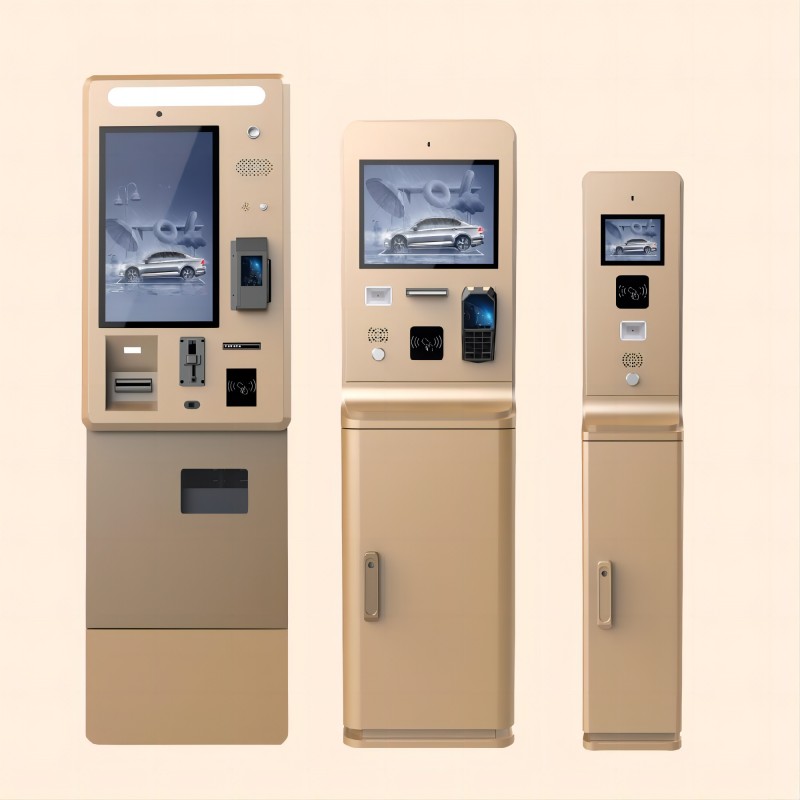Designing an outdoor information kiosk involves creating a structure specifically designed to provide information to the public in outdoor environments. These kiosks can be found in parks, city centers, tourist attractions, and other public spaces. An outdoor information kiosk is a self-service station that offers various types of information to users. It typically includes interactive touchscreens, maps, brochures, and sometimes audiovisual components. These kiosks serve to enhance visitor experience, provide directions, display event information, promote local businesses, and more.

- Challenge: Outdoor kiosks are exposed to varying weather conditions, including sun, rain, wind, and temperature fluctuations.
- Solution: Use weather-resistant materials such as cold-rolled galvanized steel with outdoor powder coating, stainless steel, aluminum etc. Equip with ventilation fan or air-condition to make sure the device normal working in hot temperature. Incorporate seals, gaskets, and weatherproof coatings to protect internal components from moisture and dust. Or, design the kiosk with a roof or canopy to shield users and equipment from direct sunlight and precipitation.
- Challenge: Ensuring the kiosk is easy to use for all users, including those with disabilities.
- Solution: Design an intuitive user interface with clear navigation and large, readable fonts. Implement touchscreens with tactile feedback or auditory cues for visually impaired users. Ensure the kiosk complies with accessibility standards like ADA (Americans with Disabilities Act) guidelines regarding height, reach, and operation.
- Challenge: Preventing vandalism and unauthorized access to sensitive information or equipment.
- Solution: Use durable materials and secure locks to protect against tampering and theft. Install security features such as cameras or alarms to deter vandalism. Consider using shatter-resistant glass for screens and enclosures.
- Challenge: Providing reliable power and internet connectivity in outdoor settings.
- Solution: Use outdoor-rated electrical components and consider alternative power sources such as solar panels or batteries. Ensure stable internet connectivity through wired or wireless options, with backup plans for network failures. Implement power-saving features to extend battery life or reduce energy consumption.
- Challenge: Integrating the kiosk into its surroundings while ensuring it stands out for visibility.
- Solution: Design the kiosk to complement the architectural style and aesthetic of the surrounding environment. Use colors and materials that harmonize with nearby structures or natural elements. Incorporate signage or lighting to enhance visibility without being obtrusive.
- Challenge: Ensuring the kiosk is easy to maintain and service over its lifecycle.
- Solution: Design access panels for easy maintenance of internal components. Choose materials that are easy to clean and resistant to corrosion or wear. Establish a maintenance schedule to regularly inspect and repair any damage or malfunctioning parts.
- Challenge: Minimizing the environmental footprint of the kiosk.
- Solution: Select sustainable materials and components with minimal environmental impact. Implement energy-efficient designs and consider lifecycle impacts during material selection. Promote recycling and responsible disposal practices for kiosk components at the end of their lifecycle.
Designing an outdoor information kiosk requires careful consideration of weather resistance, user interface accessibility, security, power/connectivity options, aesthetics, maintenance needs, and environmental sustainability. By addressing these considerations and implementing appropriate solutions, designers can create outdoor information kiosks that effectively serve their purpose, enhance user experience, and withstand the challenges of outdoor environments.